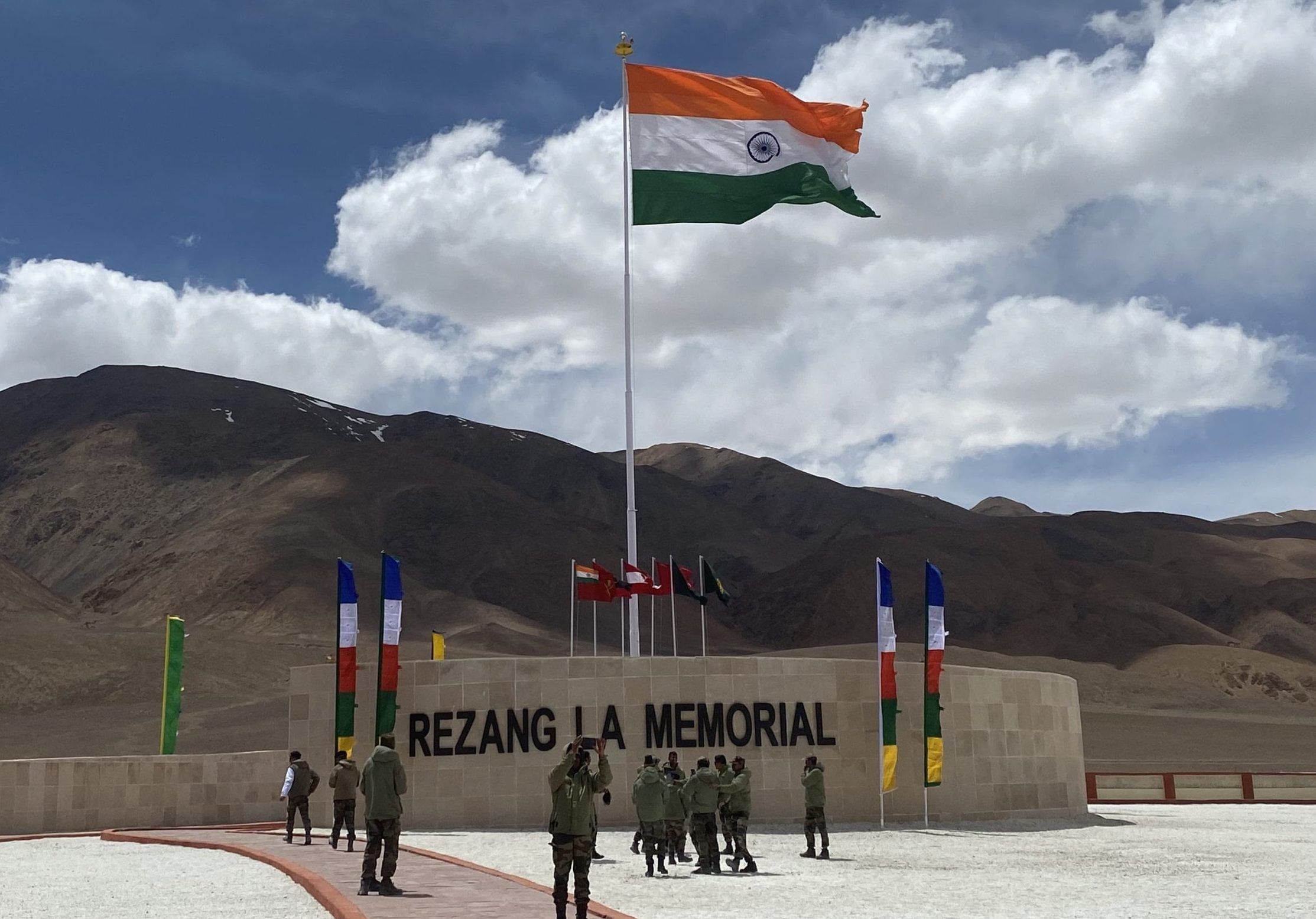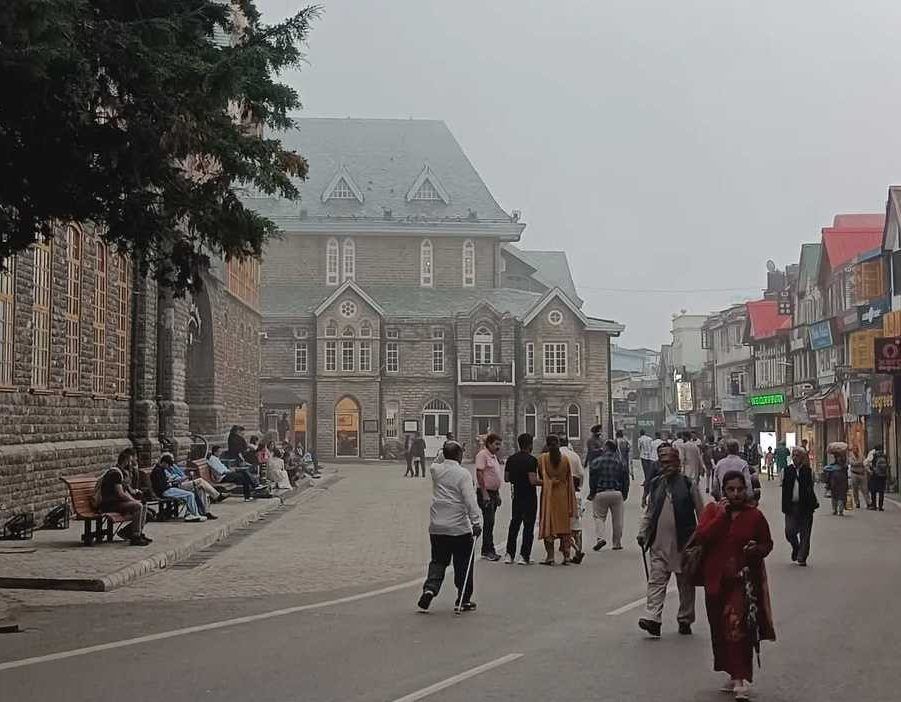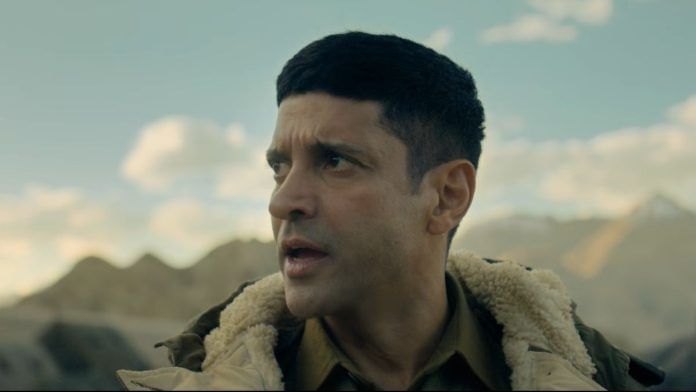New Delhi: In the heart of Delhi, where the National Stadium now occupies pride of place, was the Stadium Theatre — one of the three in the city meant primarily for defence personnel. This was the era when Delhi had multiple single-screen theatres, one in almost every gali of Old Delhi, to offer entertainment to the city’s residents. There was also the Race Course cinema, named after its location, and the Palam Theatre, located near the now-Palam airport, where defence personnel and civilians alike enjoyed watching movies together till the 90s.
Farhan Akhtar’s war epic 120 Bahadur has become the first film to release across the 800 defence theatres in India. One screening is even scheduled to be held at an altitude of 16,452 ft, as mobile theatre company PictureTime brings the movie to the Rezang La War Memorial Auditorium in Ladakh’s Chushul village. This screening, open to soldiers as well as locals, is a throwback to a once-grand tradition of watching movies in India’s fauji or defence theatres.
The garrison or defence theatres were the socio-cultural backbone of not just the defence community, but also of the surrounding neighbourhoods. While these halls were meant especially for defence personnel, civilians were not prohibited from watching films there. But defence personnel were given first priority, and the remaining seats, if any, were sold to civilians.

With the introduction of VCDs, cable TV, and subsequently DTH satellite service providers, these defence cinemas slowly started fading away, and met the fate of single-screen theatres. The final nail in the coffin was multiplexes and the internet, which meant these spaces were no longer an avenue for shared community entertainment.
The latest initiative by PictureTime and Gensync Brat media is to offer the same experience to defence personnel and their families that they once experienced in cantonment areas.
“There are 1.5 million active soldiers and over six million viewers. But only 30 percent of India’s 20-million strong veteran and family audience has access to defence cinemas. We aim to expand the ecosystem to additionally reach the underserved 70 per cent and we begin with a bang with 120 Bahadur, a film we know will deeply resonate with the forces,” said Sushil Chaudhary, Founder-CEO, PictureTime.
Delhi’s fauji halls
There was a hierarchy in place in Delhi’s cinemas, depending on region. The Connaught Place theatres — Regal and Rivoli — were the preferred ones for distributors, followed by those in Old Delhi. The same way, a new film would only be screened at Delhi’s only three fauji halls when they were on their way out. Even among those, Race Course would have the first dibs, followed by Stadium, after a week of screening. Then it would have its final run at Palam. No film would be shown for more than a week in these theatres, unlike month-long screenings at other theatres of the city.
“The three halls—Race Course, Stadium and Palam—are a delectable footnote in the history of Delhi’s cinema hall. Never first-choice halls for many but in their own unique, understated ways, they did play a vital role in bringing films to people otherwise deprived of movie fare,” writes National Award-winning film critic Ziya Us Salam in his book Delhi 4 Shows: Talkies of Yesteryear.
These theatres also did not have night shows — in alignment with stringent defence life where the personnel had to wake up early and start their duties.
In the first weekend, only defence personnel would enjoy the movie, and civilians would start trickling in Monday onward. Certain rows were, however, reserved for defence personnel.
In these rows, love stories blossomed, young men found their on-screen heroes, and families created memories that would be relived in the later decades.
“Race Course lived up to its name. Minutes before each show, the barricade would be removed and cinegoers had to sprint across a vast stretch of land to reach the ticket counter. The clerk usually followed the first come-first served policy so this system favoured those who could run faster than others. At Stadium, young men would take help from a friendly ‘uncle’ who sold books of film songs at the hall,” writes Salam.
The theatres were air-cooled with giant fans, and the seats were all wooden, with only a jute carpet covering the cement floor.
The three theatres also helped grow adjunct businesses, like kiosks selling dant manjan at Palam theatres for villagers, and shops providing printed lyrics of songs from ongoing films.
“At intermission, sellers, from dantmanjan or tooth powder to samosa and printed song leaflets, and vendors would come inside the hall to sell their wares. It was especially beneficial for low-income individuals who came to watch these films, and could not be bothered to take multiple trips outside their village,” Salam told ThePrint.
These theatres closed their doors over two decades ago, ending an era of affordable, community viewing of films.
Now, defence auditoriums double as multipurpose halls for screening movies and hosting other events for the army community.
A colonial import
The garrison theatres were a colonial import, meant for British officers and their families to let down their hair in the midst of ruling a new, exotic land. Army cantonments soon became the incubator for entertainment activities that would define India’s cultural space for decades to come — be it theatre, cinema or sports.
“When the British came to India in the middle of the 1800s, they brought in garrison theatres for the army cantonments as a form of entertainment. Later, many became cinema halls, and later important monuments of the British empire. Prior to the Second World War, an army cinema service also ran mobile cinemas in the field,” said Lt Gen H S Panag (retd), former GOC-in-C, Northern Command and Central Command.
The makeshift movie screenings were especially crucial in forward areas or in challenging terrains. It also gave the local population access to entertainment along with the forces.
“In the 1980s, the open-air auditorium was the social focal point of the garrison. The screen was a whitewashed brick wall. Jawans sat on benches or even on durries spread on the ground, while officers had rusty folding iron chairs. In a light drizzle, everyone sat through the movie, but if it rained heavily, the screening was terminated for a full refund – a grand sum of Rs 2,” said former Army Chief Gen M M Naravane.
The screen comprised a number of white sheets stitched together which rippled in the breeze, adding its own visual effects. Admissions were restricted to those associated with the army, and villagers sat in the adjacent fields watching the mirror image of the movie.
The station theatres had their own charm — they were the units’ personal hangout spots.
“In the 70s, 80s and even 90s, TV would show movies once a week. Therefore station theatres were popular joints of Fauji kids to meet their friends and many love stories blossomed there,” said Colonel (retd) Alok Mathur.
The snacks were limited to what the canteen contractor could make, but samosas and pakodas were among the popular choices.
“Some fauji theatres also catered to liquor enthusiasts, and officers mess bar NCO would put a counter there,” said Mathur.
The movie reels would be physically transported from one station to another, to ensure everyone had a chance to watch the films.
Journey of defence cinema halls
These theatres undertook their own journey, starting out as spaces for staging plays to becoming cinema halls, which were eventually either abandoned, razed or made into multipurpose halls. One example of such a multipurpose space is Shimla’s Gaiety Theatre, which was opened on 30 May 1887, as part of the large Town Hall Complex. It was known as the ‘Mecca of Theatre’.
Initially, it was a five-story building with a theatre, ballroom, armoury, police office, bar, and galleries. The theatre became the centre for entertainment and socialisation, where Viceroy Lord Lytton wrote and staged a play called Walpole, and even Rudyard Kipling acted in A Scrap of Paper.

“The places which had open air theatres, closed auditoriums also came up as part of the overall modernisation of the cantonments. These auditoriums had better audio and video quality, along with better seating, air conditioning and power backup. The generation also changed, and the present one is more used to these comforts,” said Mathur.
The Habibullah Hall at Pune’s National Defence Academy, which once had at least three movies screened per week, is now used for seminars, events, and ceremonies. On Wednesdays and Saturdays, English movies were screened, while Sundays were reserved for Hindi movies.
In Delhi, the swanky, million-dollar Manekshaw Centre, with its own auditorium, was set up in 2010 at Parade Road. It hosts a series of events, and on rare occasions, movie screenings for defence personnel.
“Now soldiers have the internet — they can talk to family and friends from anywhere and watch whatever they like, or just go to multiplexes. But those old theatres used to be the saviour in the days when nothing existed,” said Lt Gen Panag.
(Edited by Aamaan Alam Khan)






